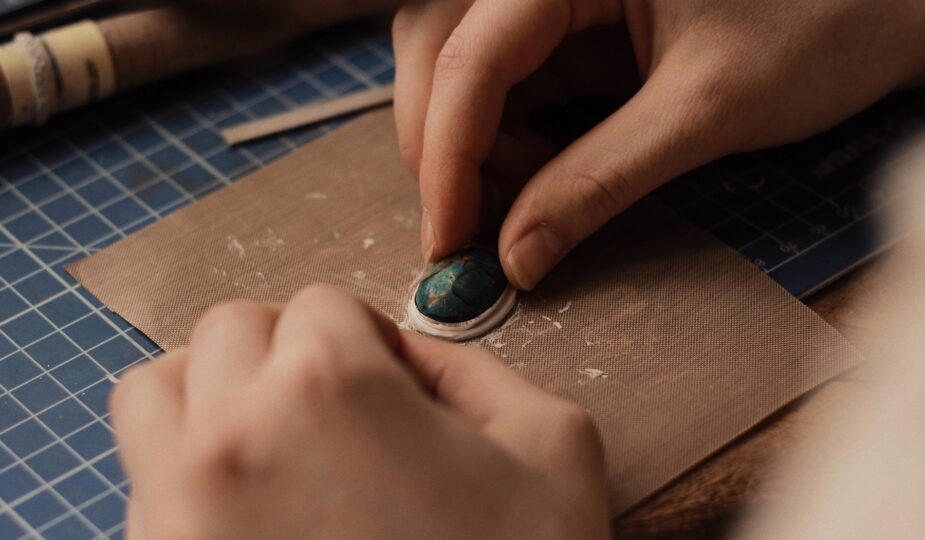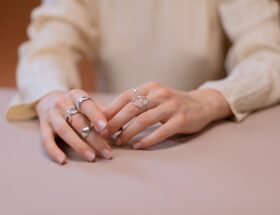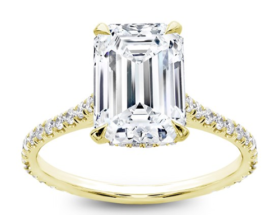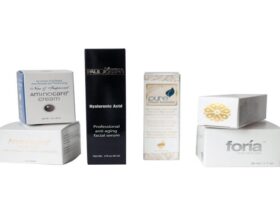Gold-filled beads and findings, sterling silver beads and findings, and platinum are the typical precious metals most used to craft fine jewelry. Fine jewelry is a great investment opportunity because of its aesthetic appeal, adaptability, and value.
The term “fine jewelry” refers to various distinct forms of jewelry. For example, if you’re looking for earrings, rings, bracelets, or necklaces, you’ll find a wide range of options with unique materials and patterns.
Throughout the Middle Ages, jewelry became a cultural symbol expressing individual ingenuity. Yet, fabulous jewelry has always been made of rare and expensive materials, contributing to its high value and extraordinary lifespan.
In many ways, fine jewelry is similar to other consumer commodities. However, fine jewelry is usually more expensive since it is made of more valuable materials.
The value of fine jewelry might fluctuate based on whether or not it was created with ethical methods in mind. Whatever the case, the cost of fine jewelry can vary from a few hundred bucks to seven figures for short pieces.
What Is Handcrafted Fine Jewelry?
For fine jewelry to be deemed handcrafted, it must have been made entirely by hand at some point. Unfortunately, almost everything can be dubbed “handcrafted” because no textbook definition exists.
But for the jewelry-making industry, handcrafted fine jewelry is mass-produced when it uses cast or machine-made components and is assembled by hand. As a result, less time, energy, and expertise is needed in most circumstances. You might know that saree styles with fine jewelry can elevate your look from ordinary to extraordinary.
Handmade fine jewelry is virtually impossible to find in retail jewelry stores or among online suppliers. Casting or pressing the metal component of the item is often done to speed up the production process.
It’s common sense that producing something by hand would be a time-consuming and pricey endeavor. However, pressing and casting have advantages over traditional manufacturing methods, including reduced production time and material waste.
Jewelry manufacturers may also rely on machine operators, albeit ones with specialized training, to create their products and jewelry-making. Using this method, you won’t have to hire pricey and skilled artisans.
Making as many copies of a design when pressing or casting in the production process is possible. As a result, the initial per-unit design costs of handcrafted fine jewelry are decreased.
The ethics of handcrafted jewelry
When purchasing ‘handcrafted’ jewelry, it is essential to investigate the origins of the pieces thoroughly. Unfortunately, child labor is still a severe problem in the jewelry business, but abuse of the workforce, in general, is widespread.
There is, strictly speaking, nothing incorrect with using the term “handcrafting” to describe the production process of jewelry. But ultimately, you get to pick how much value you place on something being created or handcrafted.
Fine Jewelry Versus Fashion Jewelry
It’s easy to get overwhelmed by the vastness of the jewelry industry, yet, virtually all pieces can be classified as falling into these categories: fashion jewelry and fine jewelry. In the long run, knowing what kind of jewelry you’re interested in or currently own is beneficial to make educated purchases and sales.
Fine jewelry
High-quality fine jewelry depreciates far slower than its cheaper rivals, making it a possible smart purchase for buying down the line or handing on to your loved ones.
Only sterling silver, pure gold, platinum, or other metals set with genuine gemstones can be considered fine jewelry.
Fine jewelry is far more durable and resilient than a costume or even semi-fine jewelry and will not tarnish with regular wear and storage. You may wear your fine jewelry daily, so it’s a good investment if you want something lasting.
Fashion jewelry
This style of jewelry, which also goes by the name “costume jewelry,” is typically created out of cheaper materials and is designed to cash in on a current fad. However, fashion jewelry should only be trendy temporarily because of the materials used.
Plus size fashion is a great way to express your personal style with fine jewelry.
Non-precious metals and non-precious stones are used to create fashion jewelry. It is not long-lasting enough for daily use but inexpensive enough to experiment with new looks without breaking the bank.
What is the difference?
Fine jewelry and fashion jewelry are two very different jewelry types. Fine jewelry is made to last forever so that it can be handed down through the ages—the karat value of the gold used to craft fine jewelry is often inscribed on the item itself.
While fashion jewelry certainly has its place in today’s fashion scene, it rarely increases in value over time. Cheaper materials are often employed in producing fashion jewelry to keep the price down.
The level of craftsmanship is another factor that is taken into account. A lot of fashion jewelry isn’t as well made as fine jewelry, so it won’t last as long and won’t wow as much as the nice stuff.
Types of Precious and Semiprecious Metals used in Fine Jewelry
Fine jewelry is any jewelry crafted from precious and semiprecious metals—embellished with precious gemstones such as diamonds, rubies, emeralds, and amethysts. The price is determined by the type of metal used and the gemstone’s carat weight, cut, color, and clarity.
Gold
Gold jewelry may keep going through changes, as this material has in the past. However, recycling gold by melting down previously used items and casting the molten metal into new forms is possible.
Many jewelers opt for gold because it is durable and easy to shape, making it the metal of choice for high-end jewelry. One ounce of gold could be spun into a thread over fifty kilometers long.
Gold alloys
By combining it with other metals, gold can be transformed into an alloy that is more robust and more suitable for use in jewelry. However, many people avoid wearing pure gold jewelry since it is easily damaged and shows signs of wear and tear, even if some jewelers utilize it.
Not only does alloying increase gold’s strength, but it also alters a number of its other attributes; for example, some gold alloys can discolor skin or trigger allergic reactions. However, these reactions aren’t due to the gold itself.
Silver
In comparison to gold or platinum, silver is both more affordable and more readily available. However, even though silver is easier to work than gold, it is more challenging due to its high thermal conductivity.
Silver’s brilliance is the most notable physical characteristic, and it’s one of several reasons why it’s so widely used in jewelry. Yet, silver is more challenging to manipulate than gold because it transmits heat so well.
Silver alloys
Silver is often alloyed with harder metals by the jewelry industry to increase its durability. As a result, they can create stunning, durable jewelry that is perfect for everyday use with silver alloys.
Sterling silver is the most widely used alloy of silver. Silver accounts for 92.5 percent of sterling silver, while other metals comprise 7.5 percent. Because it improves the hardness of the alloy, copper typically accounts for a large percentage of that 7.5 percent.
Platinum
Platinum, albeit more costly than gold, has superior strength and durability. In addition, it retains its shine over time. Because of these characteristics, it is considered a precious metal, making it a popular choice for wedding and engagement rings.
Catalytic converters are just one example of the many industrial uses for platinum. This metal does not rust, so the measurements here will be accurate for the rest of the time.
Platinum alloys
In reality, there is more than one metal to which the name “platinum” can be applied—these other metals are ruthenium, osmium, palladium, rhodium, and iridium. With the exception of osmium, all of these metals are used in jewelry, although platinum is the most common.
Silver, white gold, and other members of the platinum group often have rhodium plating applied to prevent the metal from tarnishing. In the jewelry industry, palladium and iridium are frequently used in combination with other metals or as standalone components.
Tungsten
Because of its resilience and longevity, tungsten is a standard metal choice for exquisite jewelry. An alloy of tungsten, carbon and other elements is ten times as hard as gold.
Jewelry made of tungsten, like that of gold and platinum, is affordable and substantial. In addition, after being polished by a professional, tungsten shines brightly and remains scratch-free for a more extended period than other metals.
Titanium
Titanium is a metal with a hue between platinum and silver-gray, and it is firm despite having a low density and an overall light weight. In addition, titanium is completely hypoallergenic, making it an excellent material for anyone who suffers from skin sensitivities or allergies.
Titanium may give the impression of being a pricey metal due to its widespread use in industrial applications; nevertheless, titanium jewelry is typically relatively reasonably priced. Compared to the jewelry from other metals, items made from titanium are more resilient to bending and scratching, even though titanium jewelry is more lightweight.
Zirconium
Corrosion is not a problem with zirconium rings. Because of this, it is widely utilized in the medical profession to construct nuclear reactors and, in modern times, as wedding bands.
When pure zirconium is heated for several hours, a layer of zirconium oxide forms on its surface due to chemical reactions with the air. As zirconium is heated, a coating of black oxide develops on its surface, giving it its distinctive hue.









